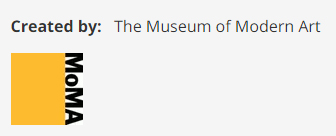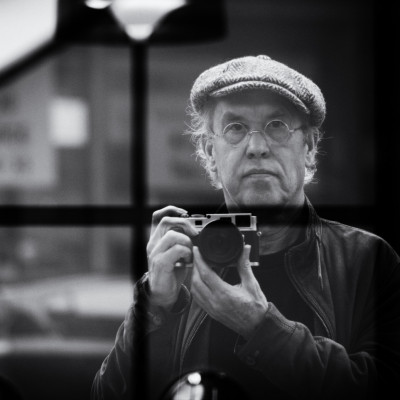SEARCH






|
|
|
|


Coursera is an online learning platform, where anyone can browse around for a subject of its interest and get a degree and certificate about it. The are many themes to choose from. The lessons are very well organized, always from the best universities and institutions. There is also an app for Smartphones that is very handy to be on track all the time everywhere.
The one that brings me here today is about Photography, and it is delivered by the Museum of Modern Art, MoMA, in New York. I have completed it by now, with very positive results.
It is called Seeing Through Photographs.


The introduction says: " Although taking, sharing, and viewing photographs has become second nature for many of us, our regular engagement with images does not necessarily make us visually literate. This course aims to address the gap between seeing and truly understanding photographs by introducing a diversity of ideas, approaches, and technologies that inform their making. In this course you will look closely at photographs from the collection of The Museum of Modern Art and hear a variety of perspectives on what a photograph is and the ways that photography has been used throughout its nearly 180 year history: as a means of artistic expression, as a tool for science and exploration; as an instrument of documentation; to tell stories and record histories; and as a mode of communication and critique in our ever increasingly visual culture. "
In a series of modules, along 6 weeks, we get an insight into the collections of the museum, built around themes with examples, where some treasures are stored for life. For example they have several renderings printed by Ansel Adams himself of his famous photograph, Moonrise over Hernandez. Fabulous to look at.
We listen to and watch at instructional videos of all kinds related to the subject. Some interviews with photographers give insights on the respective work and are all very well structures. The examples studied are some of the best photography made so far. As this is a MoMA course, everything we see on it is from the museum, the first one to give photography its place in the art world. We read the supplied documents, and there are many and precious ones, study it all, and in the end of each week, there is a quiz you have to pass with at least 80% of correct answers. A system of keyboard writing control ensures it's you behind the computer.
There can be interaction with the instructors and fellow attendants.
In the end, a text have to be submitted based on your experience and knowledge into the course, that it giving a grade by your colleagues in the module.
Everything is free to attend but if you want your diploma in hand a fee has to be paid. But it's worth it, one more relevant piece of knowledge to your résumé!
 | Write |
 | Hans Martin Doelz CREW Well, I passed the course in March, enjoyed it and received the certificate on March 6th. For those who are interested, here the text of my final assignment:
Visual perception
March 5, 2016
In 500 words, describe which module resonated with you the most and why. What are some of the issues, ideas, or themes that particularly interested you, and how did they change or complicate your understanding of photography?
Said first, all chapters of this course were interesting, they conveyed some basic informations about photography since its invention in the 1830's, from technical issues to artistic approaches to the medium.
Most interesting theme (due to its actuality) of all chapters is "Ocean of Images - Photography And Contemporary Culture". The arising questions "How do we perceive reality ?", "Is a photograph reality ?", "Describes a photograph reality ?", "What does a photograph tell ?" and the currently known artistic deals with these questions provide a multitude of possibilities to create own artistic works. The change from analogue to digital made aware that all is composed of pixels. Thomas Ruff showed this "aesthetic of the pixel" in his JPEG-series, a fact that american painter Chuck Close showed in an impressive way with his large sized "faces" - series already in the 90's.
Having said this, all images of our environment, taken through the lens of a camera, can be a basis for creating our own world/reality by manipulating these images in countless ways. We can blur, we can eliminate, we can change the ratio of height and width, we can change colors, we can change perspectives, we can add, we can merge and we can crop, only to name a few ways with which we can influence the viewer of an image.
I would like to show with my image "1 2 3" one single way of manipulation: the reduction of image elements and the effect to the visual perception of the viewer.
To come back to the second part of the question: "how did they change or complicate your understanding of photography ?":
My approach to photography was somehow unusual. Before dealing with photography I wrote computer algorithms that created some graphic structures with randomly created colors. During this phase I recognized that our environment consisted of similar structures and I tried to capture these structures with the camera.
The first attempts showed blossoms of flowers which were deformed in post-processing with the fractal-algorithm by Benoit Mandelbrot. This was the beginning of a deeper understanding of all things that surround us and an intense occupation with the human visual perception. Photography evolved for me to be an ideal medium to deal with visual perception.
Finally I would like to mention in this context some thoughts about photography, by Zoe Leonard:
"What is photography ? Is it a print, an object or is it a jpg on your screen? Does it only exist if you print it out ? Does it only count if it’s a big file, a TIFF ? Or is it a snapshot on your phone or a slide projection, or is it the image you see in your mind before you click the shutter ? Is it that great picture you missed, the time you ran out of film or the camera jammed or you didn’t even have your camera with you ? In short, is photography an object or an image, or is it a way of seeing?" (Zoe Leonard)
Cheers, Hans-Martin
|